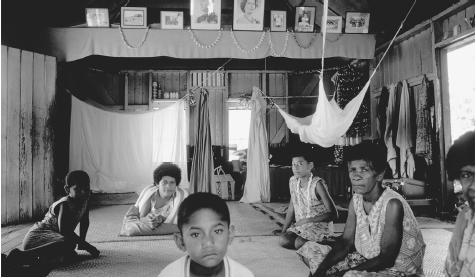
For me having both of my parents is really a blessing. But I know that one day one of them is going to go away.
One of the most striking changes in family structure over the last twenty years has been the increase of single parent families.
In this family there is only one parent in the household raising the children. Due to high divorce rates and adults choosing not
to marry, this is currently the fastest growing family form in many countries including Fiji.
More than half of all children will spend some of their lives in a single-parent family. Currently, 88 percent of these families
are headed by women.
Links- (
Single-Parent Families - Demographic Trends, Mother-only And Father-only Families, Challenges Of Single-parenting)
In 1970, the number of single parent families with children under the age of 18 was 3.8 million; by 1990 the number had
more than doubled to 9.7 million. For the first time in history, children are most likely to live in a single parent family for
reasons other than the death of a parent. One in four children are born with their mothers not married, usually teenage
mothers. One of the most expensive things for a single parent is child care.
Too often children living in single parent households have to contend with negative stereotypes and hurtful remarks made by
insensitive adults. Regardless of whether the single parent family exists as result of divorce or death of the other parent, or
the parent choosing not to marry, the child is clearly not responsible for the circumstances. However, it is often the child who
pays the price. On the other hand, single families often have less tension compared to the tension in families before divorce.
With reduced tension, the single parent can focus more clearly on the child’s needs. Usually parents and children are more
willing to co-operate with each other to find solutions to solve household problems in single parent families.
Single parenting is strongly associated with an increased risk of a number of negative social, behavioral and emotional
outcomes for children. However while the association is strong, on balance the effect size and the actual numbers affected are
modest. Most children from single parent families do well. Many factors influence how children develop in single-parent
families: the parent's age, education level, and occupation; the family's income, and the family's support network of friends
and extended family members (including the non-resident parent, if available). Disadvantages in these factors that often
accompany single parenting appear to cause most of this association rather than single parenting itself.
Shocking headlines do get published; for example a 2003 Swedish study, stated that those living with a single parent were
about three times more likely to kill themselves or end up in the hospital after an attempted suicide by the age of 26 than
children living with two parents, however this only happened to 2.2 percent of girls and 1 percent of boys. While such a
finding is concerning, clearly the vast majority of the children of single parents do not kill themselves and are under-
represented Children of single parents are very likely to share more household responsibilities, including looking after
themselves. Single parents are more likely to discuss things with their children (usually financial or family
decisions) which, in other families, are usually discussed only between parents.




